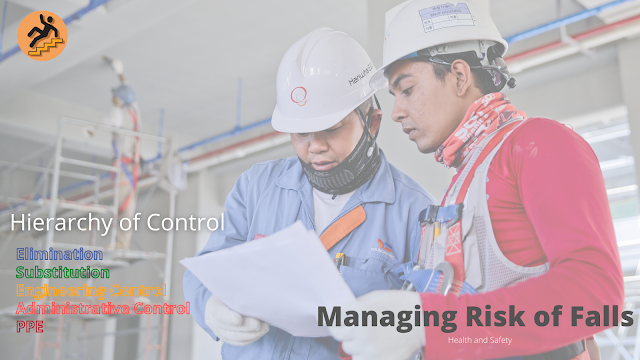Managing Risk of Falls in the Workplace
Welcome to my blog ‘healthsafetyknowledge.blogspot.com’ on managing the risk of falls. The regulations on falls aim to prevent deaths and injuries. The hierarchy of risk controls sets out the order of managing those risks.
Starting from eliminating the need to work at height. This removes all possible risks of falling. To substitution, which involves replacing the hazard with one that presents a lower risk. Followed by engineering controls, which requires structural changes like erecting barriers. Administrative controls cover work methods or procedures that are designed to minimize exposure to a hazard. Finally, using suitable and fitted personal protective equipment.
When managing a risk of a fall, the regulations also layout the equipment and systems to match, running from eliminating the risk of a fall by doing all or some of the work on the ground or undertake the work from a solid construction.
A solid construction is fixed and includes a safe means of entry and exit to the elevated workplace. For temporary working at heights. Reduce the risk by using a fall prevention device that once erected or installed there is no need for alteration. Further, reduce the risk by using a work-positioning system. Fall restraint physically prevents a person reaching a position where there is a risk of a fall. Reduce the remaining risk by using fall-arrest systems. These systems should only be used if a higher level of control is not effective in preventing a fall on its own.
When a fall-arrest-system has been selected as a control measure, emergency, and rescue procedures must be established and tested to ensure they are effective.
Lastly, reduce the remaining risk by using administrative controls. You must not use administrative controls exclusively unless it is not reasonably practicable to use a higher level. The control measures are ranked from the highest level of protection and reliability to the lowest. In some cases, a combination of control measures may be necessary.
It should also be ensured that the selected control measures do not create new/other hazards. Any new hazards created must also be controlled. The control measures implemented must be monitored to ensure they work as planned and remain effective. Remember, controlling fall risks is the only option.


.png)
.png)

Comments
Post a Comment